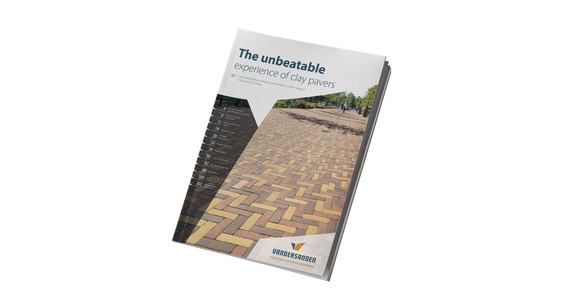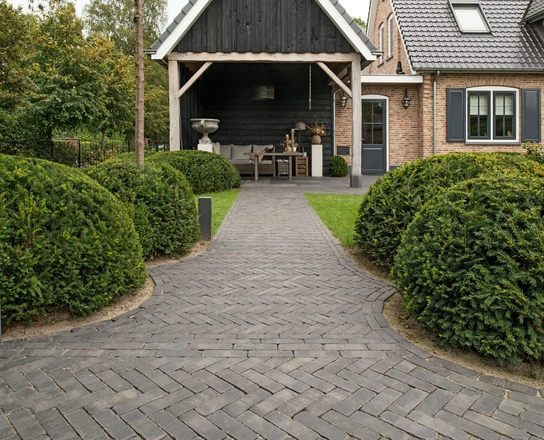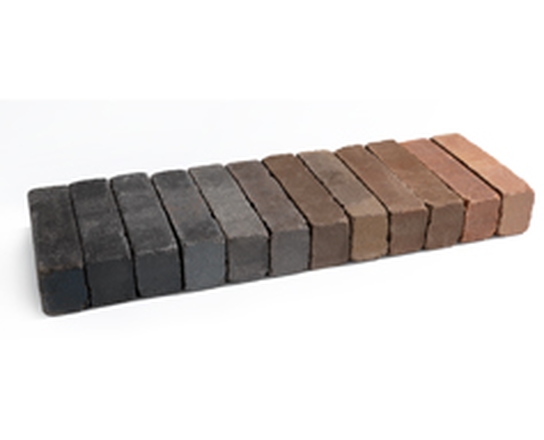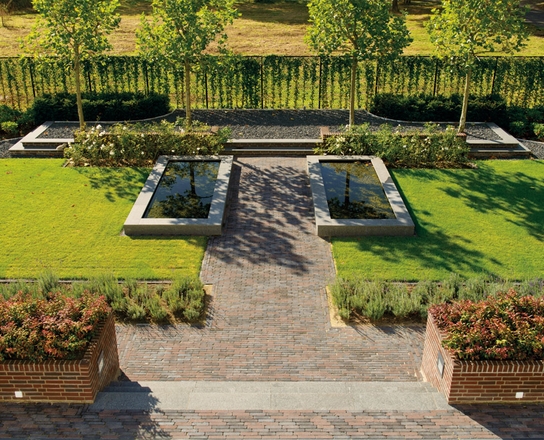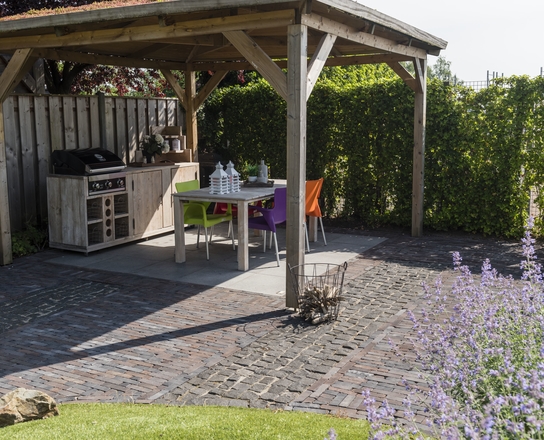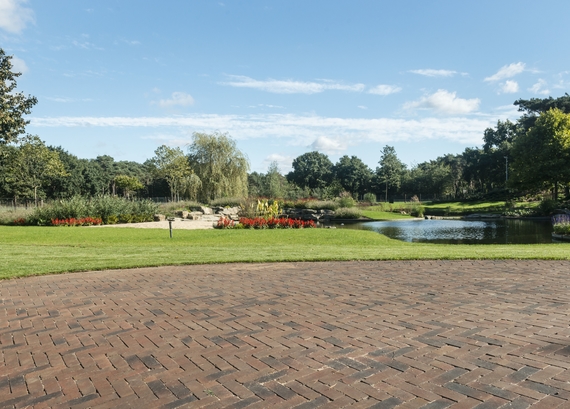
Which garden style suits you best?
Tastes vary, including when it comes to gardens. If you want to design your garden yourself, it can be useful to decide what atmosphere you want to create. Which style suits you and which paving matches that style? Garden architects distinguish four main styles:
Garden styles
- The formal garden
- The country garden
- The modern garden
- The natural garden
These garden styles are based on known examples from garden architecture. They form a useful aid in determining the layout, planting, and materials for your own garden.
The formal garden
The formal garden is based on the classic French baroque garden, with the gardens of Versailles the most famous example. Formal gardens are primarily intended to be pleasing on the eye. They have a nice, chic appearance. Formal gardens usually have a symmetrical design, with a central axis. The central axis leads the eye past a fountain or statue and into the distance. On either side of the axis are rectangular flower beds, bordered by low boxwood hedges. These are then planted with tulips, roses, or lavender. The paths are straight with decorative paving. Pruned trees, pergolas, and large flowerpots work well in this design.
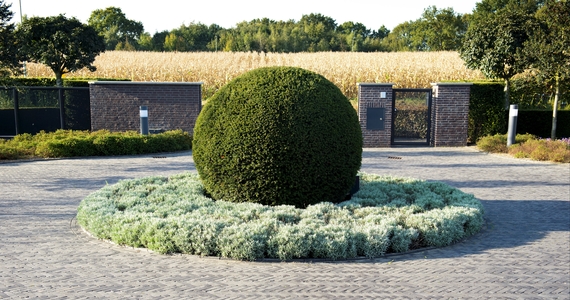
The country garden
At the end of the eighteenth century, the English landscape style emerged as a counter-response to the strictly formal gardens. People were craving a little more nature. Gardens and parks were given round ponds, winding paths, and part-concealed gazebos. Lawns interchanged with groups of trees and shrubs. In the English cottage garden, the flower border plays a key role, and an abundant composition of perennials blooms the whole year round.
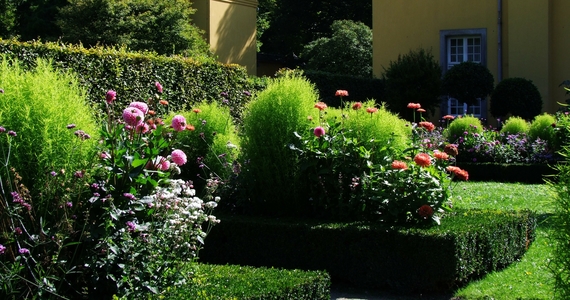
The modern garden
At the beginning of the twentieth century, people returned to New Objectivity. English gardens were found to be too romantic. The role of a garden is more important than its form. As such, gardens began to take on a practical layout, constructed with geometric shapes. Dutch garden architect Mien Ruys was the founder of this garden style. Her designs are clear and simple, with square water features and planted areas. These tight shapes offer space for natural planting. Raised borders, large garden slabs, and ornamental grasses are characteristic of this style.
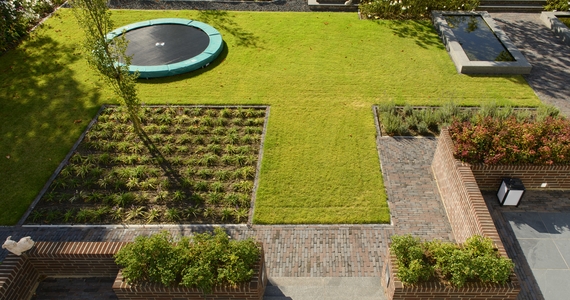
The natural garden
Most people today live in urban areas. To bring them a little closer to nature, some turn their gardens into an oasis for plants and animals. They opt for flowers that attract bees and butterflies, and for shrubs and trees that attract birds. A natural garden needs a natural layout, with gradual transitions and corners where animals can hide. It is also important to avoid too much paving, so that rainwater can seep into the ground easily. Nest boxes, old tree stumps, and a stacked wall of bricks can make a natural garden complete.
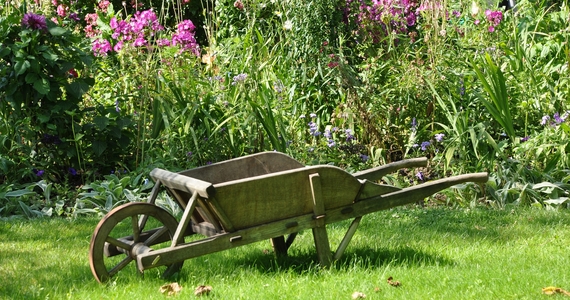
A fantastic end result starts with ideas and inspiration
You might already have a clear idea or design for your garden or public space project, or perhaps you want to have an idea of the options first. Wherever you’re starting from, it begins with inspiration, and we’d be happy to help you along the way. Be surprised by the endless possibilities offered by Vandersanden clay pavers and get a taste for the unparalleled appearance and authentic sense of experience.
Find inspiration
The different garden styles trace their roots back in time. They tell a story of the way in which the garden owner lived. Do you want a garden with a chic look, or do you want your garden to be a place for the children to play? Do you want to dream away in a country atmosphere, or is nature more important? The historical garden styles offer an inspiring starting point for developing your own garden style.


